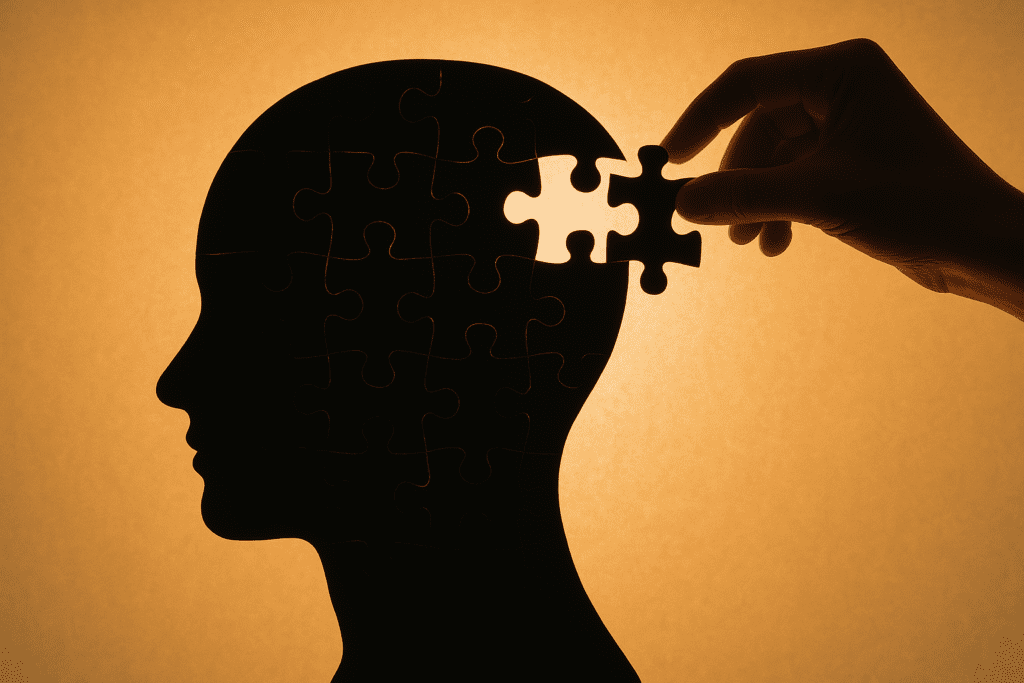Understanding Resilience: More Than Just Bouncing Back
Resilience is often described as the ability to bounce back from adversity, but that definition only scratches the surface. True resilience is a multifaceted psychological and physiological trait that encompasses how we interpret challenges, respond to stress, and engage with the world after setbacks. It doesn’t mean one never struggles; instead, it reflects the strength to face pain, fear, and uncertainty with adaptability and purpose.
You may also like: Emotional Resilience Explained: What It Means, Why It Matters, and How to Strengthen It for Better Mental Health
When considering what makes someone resilient, it’s important to understand that resilience is not a fixed trait. It’s a dynamic process that can be cultivated through intentional behavior, emotional insight, and lifestyle changes. While genetics and early experiences play a role, resilience can also be learned and strengthened across the lifespan.
Recent psychological research and neuroscience advancements have shown that resilience involves specific brain systems that regulate stress and emotional control. These systems are not only reactive but also proactive, shaping our capacity to recover from emotional injury and engage positively with the future. Whether navigating grief, trauma, or everyday stressors, a resilient personality allows individuals to maintain equilibrium while continuing to grow and thrive.
The Psychology Behind a Resilient Personality
To understand what makes people resilient, psychologists have explored a variety of traits and thought patterns that consistently appear in resilient individuals. One core component is emotional regulation—the ability to manage overwhelming feelings without becoming consumed by them. This capacity allows individuals to pause before reacting, reflect on the meaning of their experience, and choose adaptive rather than destructive responses.
Another psychological hallmark of a resilient personality is cognitive flexibility. People who are resilient tend to view problems from multiple perspectives and are open to adjusting their beliefs when necessary. They are not rigid in their thinking, which enables them to find solutions even in complex, uncertain situations. This mental flexibility often accompanies a sense of optimism—not blind positivity, but a realistic sense of hope that things can get better.
Self-efficacy also plays a central role. Resilient individuals believe in their ability to influence outcomes and cope effectively with challenges. This belief encourages proactive coping strategies, such as seeking support, setting goals, and engaging in problem-solving rather than avoidance. The interplay between self-efficacy and optimism forms a robust foundation for the psychological strength that characterizes resilience.
Importantly, resilient people tend to have a coherent narrative of their life experiences. They make sense of their hardships by integrating them into their personal stories, often viewing difficult times as chapters of growth or transformation. This ability to find meaning in adversity helps them move forward with a greater sense of purpose and self-understanding.
The Neuroscience of Resilience: Brain Circuits That Support Recovery
Modern neuroscience has provided compelling insights into what makes someone resilient at the biological level. Brain imaging studies show that resilient individuals have stronger connectivity between the prefrontal cortex and the amygdala. The prefrontal cortex is responsible for executive functions such as decision-making, self-regulation, and planning, while the amygdala is the brain’s fear and emotion center. When the prefrontal cortex is effectively regulating the amygdala, individuals are better able to stay calm under pressure and recover from stress more quickly.
In addition to this brain circuitry, the hippocampus—responsible for memory consolidation and emotional processing—also plays a vital role. A well-functioning hippocampus helps people contextualize stress and prevent overgeneralization of fear. This contributes to balanced responses to trauma or adversity and reduces the likelihood of developing anxiety disorders.
Another key player is the anterior cingulate cortex (ACC), which contributes to error detection, emotional awareness, and adaptive behavior. Studies suggest that individuals with greater ACC activity tend to exhibit stronger resilience, especially in emotionally challenging environments. This brain region acts like an internal compass, guiding people toward constructive coping strategies.
Neurochemical factors also shape a resilient personality. Neurotransmitters such as dopamine, serotonin, and oxytocin are involved in reward, mood regulation, and social bonding. Healthy levels of these chemicals foster emotional stability, positive relationships, and motivation—all of which reinforce resilience. The plasticity of the brain means that through practices like mindfulness, physical exercise, and cognitive-behavioral therapy, these neurochemical systems can be strengthened over time, enhancing our ability to bounce back from stress.
Habits and Lifestyle Choices That Foster Resilience
While biology lays the groundwork, everyday behaviors shape the expression of resilience in profound ways. Consistent habits have the power to reinforce the psychological and neurological pathways that underpin a resilient personality. Among the most influential is maintaining strong social connections. Supportive relationships act as emotional buffers, helping individuals process pain, feel seen, and regain perspective when life feels overwhelming.
Another essential habit is practicing mindfulness and self-awareness. Being in tune with one’s thoughts and emotions allows individuals to respond rather than react. Mindfulness helps reduce stress reactivity, increases gray matter in key brain areas, and enhances emotional regulation. This doesn’t require hours of meditation each day; even simple grounding practices such as mindful breathing or body scans can shift the nervous system toward a state of balance.
Regular physical activity is also a cornerstone of resilience. Exercise boosts endorphins, reduces inflammation, and promotes neurogenesis— the growth of new brain cells. These physiological benefits translate into better mood, increased stress tolerance, and improved cognitive function. Whether it’s running, swimming, dancing, or yoga, physical movement acts as a natural resilience enhancer.
Additionally, resilient individuals tend to prioritize sleep and nutrition, both of which play critical roles in mental and emotional health. Sleep deprivation impairs the prefrontal cortex’s ability to regulate the amygdala, making it harder to manage emotions under stress. Nutrient-rich diets that support brain health—such as those high in omega-3 fatty acids, complex carbohydrates, and antioxidants—also contribute to psychological stability and resilience.
Journaling, gratitude practices, and engaging with purpose-driven activities are other powerful ways people cultivate emotional strength. These habits help reinforce a narrative of agency and optimism, solidifying the foundations of a resilient personality in daily life.

The Role of Childhood, Environment, and Genetics
While habits and mindset shape resilience in adulthood, early life experiences often lay the foundation. Children who grow up in emotionally supportive, stable environments are more likely to develop secure attachment styles and strong self-regulation skills. These traits form the bedrock of resilience, allowing individuals to form healthy relationships and respond constructively to stress.
However, resilience is not exclusive to those with ideal childhoods. Many people who experienced trauma or adversity in their early years develop what psychologists call “post-traumatic growth.” This concept refers to the ability to not just recover from hardship but to thrive as a result of it. Through reflection, support, and meaning-making, individuals can transform early wounds into sources of strength.
Genetics also contribute to what makes people resilient. Certain gene variants are associated with how the brain responds to stress and processes emotion. For instance, variations in the serotonin transporter gene (5-HTTLPR) have been linked to emotional sensitivity and stress vulnerability. However, these genes are not deterministic. The emerging field of epigenetics shows that environmental influences can turn genes on or off, meaning that even genetic predispositions can be moderated through lifestyle, relationships, and therapeutic interventions.
Importantly, the plastic nature of the human brain means that resilience is always within reach, regardless of background. With the right environment, tools, and support, anyone can strengthen their ability to face life’s challenges with grace and grit.
Social Support, Community, and Connection
One of the most consistently cited factors in resilience research is the presence of meaningful social support. A resilient personality does not develop in isolation. People who maintain close, trusting relationships with family, friends, or community members recover more quickly from trauma and adapt more successfully to change. These connections provide emotional validation, practical help, and a sense of belonging that acts as a protective buffer against life’s stressors.
In fact, social neuroscience has demonstrated that oxytocin—the so-called “bonding hormone”—is released during positive social interactions and plays a key role in emotional regulation and resilience. This hormone reduces activity in the amygdala and promotes feelings of calm and trust, helping individuals feel safe even in the face of difficulty.
Beyond one-on-one relationships, being part of a larger community can also foster resilience. Whether it’s involvement in spiritual groups, volunteer organizations, clubs, or support groups, having a shared purpose and collective identity can help people weather personal challenges with greater fortitude. Communities offer perspective, shared wisdom, and emotional reinforcement that can be profoundly healing.
Conversely, loneliness and social isolation have been linked to reduced resilience, higher stress reactivity, and increased risk of mental and physical illness. Prioritizing meaningful connection, even in small ways, is a vital investment in psychological strength and long-term well-being.
Resilience in Action: Real-Life Examples of Strength
One of the most compelling ways to understand what makes someone resilient is through real-life examples. Consider the stories of individuals who have faced loss, failure, or trauma and emerged not only intact but empowered. Whether it’s a cancer survivor who becomes a patient advocate, a war veteran who finds peace through community work, or a laid-off worker who builds a new career from scratch, these narratives illustrate that adversity can be a catalyst for growth.
These individuals often share similar traits: a willingness to confront reality, the ability to find meaning in hardship, and a commitment to values that transcend personal suffering. They don’t necessarily feel brave in the moment, but they persist through fear, doubt, and pain because they believe in something greater than their immediate circumstances.
Such stories remind us that a resilient personality is not characterized by the absence of vulnerability, but by the courage to act in spite of it. The process of becoming resilient is rarely linear. It involves setbacks, emotional lows, and inner turmoil. But through reflection, adaptation, and support, people develop the strength to turn pain into purpose and emerge with deeper insight and greater compassion.
Cultivating Resilience Through Therapy and Self-Work
While some people seem naturally resilient, many strengthen their resilience through conscious effort, often with the help of therapy. Approaches like cognitive-behavioral therapy (CBT) teach individuals how to identify distorted thinking patterns and replace them with more adaptive, constructive thoughts. This shift in perspective not only improves emotional regulation but also reinforces beliefs in personal efficacy and agency.
Other therapeutic approaches, such as acceptance and commitment therapy (ACT) and dialectical behavior therapy (DBT), emphasize mindfulness, emotional tolerance, and values-based living. These tools help individuals stay grounded during distress and make decisions aligned with their deeper goals and identities.
Resilience training is increasingly being incorporated into workplace wellness programs, educational settings, and healthcare systems. These programs often combine psychoeducation, stress management techniques, and goal setting to build psychological strength in proactive, accessible ways.
Self-directed strategies can also be highly effective. Reading books about resilience, engaging in expressive writing, practicing guided meditation, or participating in structured self-improvement courses can all contribute to a more resilient mindset. The key is consistency and a willingness to engage with both strengths and vulnerabilities as part of the human experience.

Frequently Asked Questions: Resilience, Psychology, and the Science of Strength
1. Can resilience be taught in adulthood, or is it only developed in childhood?
Contrary to the belief that resilience is established only during early development, research in adult neuroplasticity suggests that a resilient personality can absolutely be cultivated later in life. While early life experiences do influence emotional regulation and attachment, the adult brain remains capable of growth and change. In fact, adults often have more insight and agency when choosing how to adapt and respond to stress. What makes someone resilient as an adult often involves intentional practice—such as structured therapy, reflective journaling, or behavior change—that rewires brain circuits and reinforces new coping strategies. This proves that what makes people resilient is not a fixed life stage, but an ongoing process rooted in adaptability and self-awareness.
2. Are there cultural differences in how resilience is expressed or developed?
Absolutely—cultural context plays a significant role in shaping how resilience manifests and how it’s measured. In collectivist societies, for instance, resilience is often tied to community well-being, interdependence, and the preservation of group harmony. Meanwhile, in individualistic cultures, a resilient personality is frequently defined through personal autonomy, achievement, and emotional self-control. These differing values influence what makes someone resilient across cultures, showing that resilience is not one-size-fits-all. Understanding what makes people resilient in a global context involves recognizing that emotional expression, coping mechanisms, and definitions of strength can vary dramatically depending on cultural norms and support systems.
3. How do creative outlets like art, music, or writing contribute to resilience?
Engaging in creative practices stimulates brain regions associated with emotion processing, problem-solving, and meaning-making—key components of a resilient personality. These outlets allow individuals to externalize their emotions in nonverbal ways, offering relief and clarity during distress. Creative expression also facilitates narrative development, which helps people integrate difficult experiences into their identity without being overwhelmed by them. This is a powerful example of what makes people resilient: not just surviving hardship but transforming it into art, insight, or a new perspective. Whether it’s composing music, painting feelings, or writing personal essays, creativity creates space for healing and reinvention.
4. Does having a resilient personality mean you never feel overwhelmed or anxious?
Not at all. A resilient personality doesn’t prevent someone from experiencing fear, sadness, or anxiety—it simply means they’re better equipped to navigate those emotions without being consumed by them. What makes someone resilient is their ability to return to equilibrium after emotional upheaval, not the absence of emotional responses. In fact, many resilient people feel deeply; they just have healthy tools to process those feelings. Learning how to sit with discomfort and still move forward is a hallmark of what makes people resilient. The misconception that resilient individuals are stoic or unaffected can be damaging, as it discourages emotional honesty and vulnerability, which are both vital to resilience.
5. Can trauma survivors still develop a resilient personality?
Yes—and often, trauma survivors emerge with an even deeper level of resilience known as post-traumatic growth. This occurs when individuals, after processing a traumatic experience, find renewed purpose, strength, or empathy that wasn’t accessible to them before. What makes someone resilient after trauma isn’t the suppression of pain but rather the ability to integrate the experience into their personal narrative in a way that fosters growth. With the right support, therapy, and self-compassion, trauma can become a catalyst for transformation. Many examples of what makes people resilient come from individuals who have overcome immense adversity and turned their pain into advocacy, leadership, or wisdom.
6. How does spirituality or faith influence resilience?
Spirituality and faith often serve as powerful psychological anchors during life’s most difficult moments. They can offer meaning, community, and a sense of transcendence that buffers individuals against despair. What makes someone resilient in this context is often a belief in something larger than themselves—whether it’s a higher power, the continuity of life, or a moral framework that provides direction. These beliefs can help people interpret suffering as purposeful or temporary, rather than random and meaningless. While not everyone identifies as religious, even secular philosophies or mindfulness-based practices can foster the same protective effects, illustrating one more layer of what makes people resilient beyond psychological or biological factors.
7. Do certain careers or environments cultivate resilience more than others?
Some professions inherently foster the traits of a resilient personality due to the nature of their demands. Healthcare workers, military personnel, social workers, and educators often face high-stakes stress, repeated exposure to trauma, and the need for emotional endurance. In these fields, resilience isn’t optional—it’s a necessary skill for longevity and effectiveness. What makes someone resilient in these environments is often a combination of mental preparedness, strong peer support, and consistent self-care routines. Interestingly, structured resilience training programs are becoming more common in these fields to proactively build what makes people resilient under chronic stress. The more an organization invests in mental health and community, the stronger the resilience culture tends to be.
8. Is there a genetic component to what makes someone resilient?
Yes, genetics do play a role, although they don’t tell the whole story. Certain gene variants, such as those involved in serotonin transport or dopamine regulation, can affect how the brain responds to stress or threat. For instance, people with certain versions of the 5-HTTLPR gene may be more emotionally sensitive, which could either hinder or enhance resilience depending on environmental factors. However, what makes people resilient isn’t determined solely by DNA. Epigenetics shows us that lifestyle, relationships, and even thoughts can influence how genes are expressed. A resilient personality is shaped by both nature and nurture—genes may predispose, but experience and choice define the outcome.
9. Can physical illness or chronic health conditions affect resilience?
Living with a chronic illness challenges resilience in unique ways, often requiring individuals to navigate ongoing uncertainty, pain, and identity shifts. Yet many people with chronic conditions develop exceptional emotional strength precisely because of these demands. What makes someone resilient in this context is their ability to adapt their expectations, advocate for themselves in medical settings, and sustain hope without denying reality. Peer support groups, disability activism, and narrative medicine are all tools that empower resilience in the face of physical limitations. In fact, many advocates within the chronic illness community exemplify what makes people resilient by redefining strength and success on their own terms, often becoming powerful voices for change.
10. What are some emerging tools or technologies that support resilience development?
Digital mental health tools are rapidly evolving to support the development of a resilient personality. Mobile apps offering guided meditation, resilience training modules, and AI-powered mood tracking help users build awareness and regulate emotions in real time. Virtual reality (VR) is also being explored in therapy to simulate stress-inducing environments in a safe setting, allowing people to build coping skills under supervision. Biofeedback devices and wearable technology now provide physiological data—such as heart rate variability—that helps individuals monitor and modulate their stress responses. These innovations are reshaping what makes someone resilient in the modern world by making tools more accessible and data-driven. As technology advances, what makes people resilient may increasingly involve digital literacy and the ability to integrate these tools into daily life for long-term mental wellness.

Conclusion: Embracing the Journey Toward a Resilient Personality
What makes someone resilient is not a single trait or life event but a dynamic interplay of mindset, behavior, brain function, and social connection. A resilient personality is forged through the willingness to confront hardship with courage, reflect on its meaning, and emerge stronger on the other side. It’s supported by healthy habits, nurtured relationships, and the capacity to regulate emotions while staying aligned with personal values.
Understanding what makes people resilient empowers us to see adversity not as a detour but as part of the path toward growth. While genetics and childhood experiences may set the stage, the daily choices we make—how we think, how we act, and how we connect—have the power to rewrite our psychological story. By strengthening the habits, thought patterns, and relationships that build resilience, we invest in a more stable, meaningful, and fulfilling life.
Ultimately, resilience is not about avoiding pain but learning to carry it with strength, compassion, and purpose. Whether you’re navigating personal loss, professional change, or the quiet stress of everyday life, developing a resilient personality equips you with the inner resources to adapt, endure, and rise.
emotional resilience, psychological strength, coping with adversity, emotional regulation strategies, mental flexibility, stress management techniques, trauma recovery tools, brain-based emotional healing, neuroplasticity and mental health, adaptive coping mechanisms, emotional intelligence development, positive psychology practices, building mental toughness, cognitive behavioral techniques, emotional wellbeing habits, mindfulness for stress, self-efficacy in mental health, social support and healing, post-traumatic growth, mental health and neuroscience.
Further Reading:
Resilience: Characteristics and Examples
Why are some individuals more resilient than others
Biological and Psychological Perspectives of Resilience
Disclaimer
The information contained in this article is provided for general informational purposes only and is not intended to serve as medical, legal, or professional advice. While Health11News strives to present accurate, up-to-date, and reliable content, no warranty or guarantee, expressed or implied, is made regarding the completeness, accuracy, or adequacy of the information provided. Readers are strongly advised to seek the guidance of a qualified healthcare provider or other relevant professionals before acting on any information contained in this article. Health11News, its authors, editors, and contributors expressly disclaim any liability for any damages, losses, or consequences arising directly or indirectly from the use, interpretation, or reliance on any information presented herein. The views and opinions expressed in this article are those of the author(s) and do not necessarily reflect the official policies or positions of Health11News.


